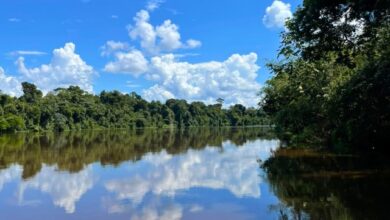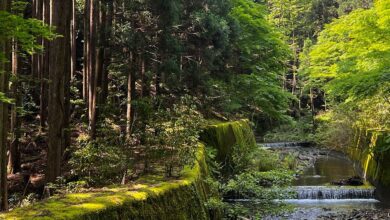
PIA long houses (Maloca) in the Puré National Park region. Photo Credit: Cristobal Von Rothkirch
EnvironmentSociety ColombiaLandmark Territory Offers Proper Protection to Indigenous Peoples
Concerted efforts led to the establishment of a formalised territory in Colombia – the first of its kind – to protect Indigenous Peoples within a hugely biodiverse part of the country, paving the way for the recognition of other groups in other parts of the Colombian Amazon that have yet to be recognised.
Much of the newly established formalized territory called “Territoriality of the Indigenous Peoples in Isolation between the Caquetá and Putumayo Rivers” – 929,502 hectares out of 1,092,849 hectares – is under a strict category of protection for the Indigenous Peoples that inhabit it, namely the Yuri-Passé isolated Indigenous group, for them to live in isolation as per their cultures in their ancestral territories.
On October 23, 2024, the Colombian government recognised the existence of the IPA (Pueblos Indígenas en Aislamiento, or Indigenous Peoples in Isolation) in the areas between the Caquetá and Putumayo Rivers and their respective territories. Indigenous authorities, the Colombian government, and civil society organisations joined forces to establish this formalised territory. Two hundred sixty thousand one hundred ten hectares of the territory overlap with the Río Puré National Park, where the Colombian government recognises the protection of existing indigenous reserves. No contact with this group of IPA has been guaranteed, in addition to protection for the forests they depend on for their survival. This part of the Amazonian rainforest is home to tree-climbing species, including lianas, epiphytes, bromeliads, mosses, and tree species such as Yavarí palms, ananguchillo, and Asaí. It is also home to more than 600 recorded Amazonian species like the threatened oncilla, giant armadillo, and giant anteater.



